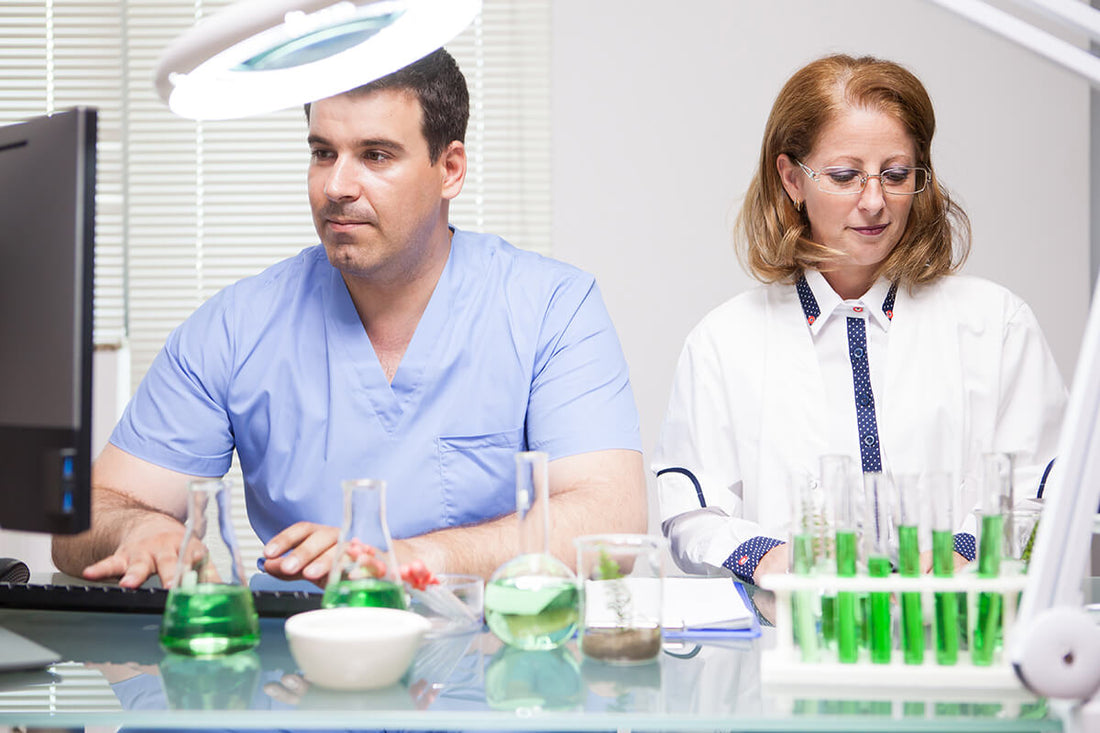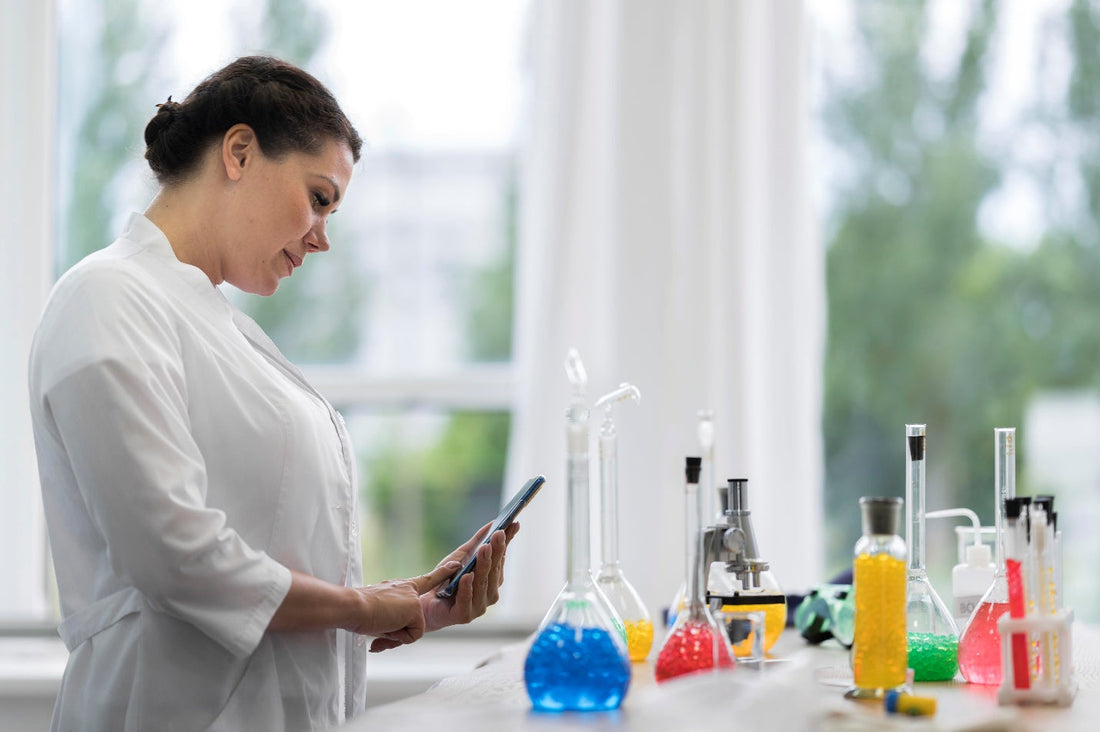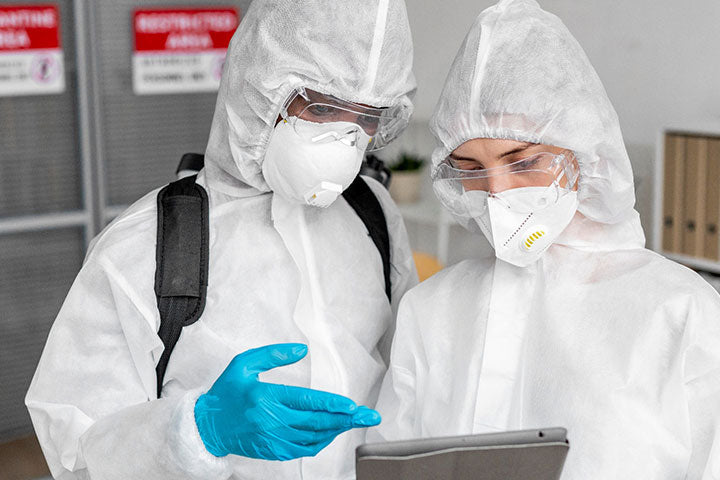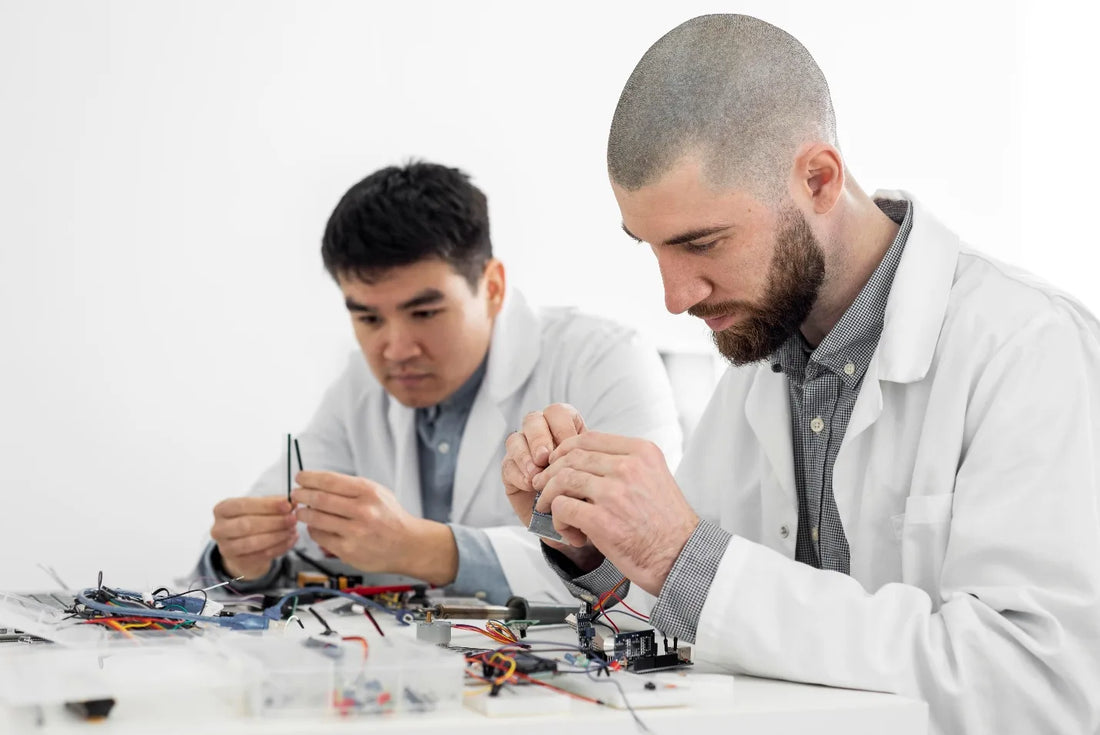Best Practices for Disinfecting Your CO2 Incubator Safely

Summary
-
CO2 incubators are essential for cell culture and biomedical research but are prone to contamination due to their warm and humid environment.
-
To prevent microbial growth and protect research integrity, regular disinfection is crucial. Use non-corrosive, broad-spectrum disinfectants such as 70% ethanol or hydrogen peroxide, and avoid harsh chemicals like bleach.
-
Follow a clear cleaning schedule that includes daily inspections, weekly pan cleanings, monthly deep cleans, and periodic sterilization using built-in UV or heat cycles.
-
Always wear your PPE, follow manufacturer guidelines, and disinfect associated lab tools to maintain a contamination-free environment.
Introduction
CO2 incubators are essential tools in laboratories that focus on cell culture, microbiology, and biomedical research. These devices create a controlled environment that mimics physiological conditions, maintaining stable temperature, humidity, and carbon dioxide levels to support cell growth.
However, without sufficient laboratory equipment disinfection, their warm and humid interior makes them a perfect breeding ground for contaminants like bacteria, fungi, and mycoplasma. Apart from contaminating experiments, destroying sample integrity, and increasing downtime in the lab, contaminated equipment poses a potential safety hazard and can lead to compliance violations.
In this guide, we will walk you through the best practices for safely disinfecting your CO2 incubator, choosing the proper disinfectant, and helping you avoid costly mistakes.
Understanding Your CO₂ Incubator
A CO2 incubator is a specialized piece of laboratory equipment designed to cultivate and maintain cell cultures under controlled environmental conditions. Key functions of a CO2 incubator include:
-
Temperature Control: CO2 incubators maintain a temperature of 37 degrees Celsius, which is optimal for many cell types, including the temperature of the human body.
-
CO2 Regulation: Your incubator helps maintain the pH of culture media, typically at around 5%, which is optimal for cell viability and function. This process is achieved through a sodium bicarbonate buffering system.
-
Humidity Control: The incubator maintains 90-95% humidity to prevent the culture media from drying out and to minimize evaporation.
-
Sterilization: Many CO2 incubators incorporate hot air sterilization routines to prevent contamination, which is a common issue in cell culture labs.
-
Monitoring and Control: Some CO2 incubators have sensors and software to monitor and adjust parameters such as temperature, humidity, and CO2, ensuring a stable environment for scientific success.
When and How Often Should You Disinfect a CO₂ Incubator?

Routine laboratory equipment disinfection is crucial for preventing contamination of your CO2 incubator. The frequency of disinfection should depend on the incubator's usage frequency, the type of experiment it is used for, and its history of contamination.
Here is a detailed disinfection schedule for you:
Daily
-
Inspect the interior for signs of spills and contaminants.
-
Wipe down the exterior of the incubator, especially frequently touched areas like handles.
-
Check the water pan and ensure it is filled with fresh, sterile, distilled water.
Weekly
-
Empty, clean, and disinfect the water pan.
-
Refill with fresh, sterile distilled water.
Monthly
-
Perform a thorough interior cleaning.
-
Remove and clean all internal components, such as shelves and racks.
-
Wipe down the interior chamber with a disinfectant solution (70% ethanol).
-
Clean and disinfect the CO2 sensor, if it is accessible.
-
Clean and disinfect the exterior surfaces.
-
Consider replacing the HEPA filter according to the manufacturer’s specifications.
Every 6 months
-
If your incubator has an automatic disinfection routine, run it according to the manufacturer’s specifications.
Annually
-
Schedule professional preventive maintenance, including calibration checks and replacement of worn parts.
When to Disinfect Immediately
-
If there is visible contamination (mold, strange odor, cloudy water in the pan).
-
After spills of media or biological material.
-
After culturing high-risk organisms, such as primary cells, fungi, or pathogens.
-
Before starting a sensitive or long-term experiment.
-
After detecting mycoplasma or other microbial contamination during testing.
Choosing the Right CO₂ Incubator Disinfectant
Not all disinfectants are suitable for sensitive equipment, such as a CO2 incubator. Choosing the wrong solution can damage your equipment, leave toxic residues behind, or fail to eliminate stubborn contaminants like mycoplasma. When selecting a disinfectant, prioritize compatibility with your equipment’s materials and efficacy.
Key factors to consider include:
Material Compatibility
Most CO2 incubators are constructed from stainless steel, featuring sensitive sensors and seals. Therefore, when choosing disinfectants, prioritize non-corrosive solutions, such as 70% ethanol or isopropanol. Additionally, ensure that no residues are left that can affect cell culture.
Broad-Spectrum Efficacy
Disinfecting your CO2 is not just about surface cleanliness; it is about biological control. Cell culture incubators are vulnerable to a wide range of contaminants, including bacteria, fungi, mold, viruses, and mycoplasma. A broad-spectrum or general lab disinfectant ensures that you are targeting all relevant threats, not just the usual ones.
Some broad-spectrum solutions include peracetic acid, hydrogen peroxide (3-6%), and quaternary ammonium compounds (Quats).
Ease of Use
In a fast-paced laboratory environment, the best disinfectant is one that is easy to prepare, apply, and remove without requiring extra steps or excessive downtime. Examples of easy-to-use disinfectant solutions include pre-mixed 70% ethanol and hydrogen peroxide.
Step-by-Step Guide to Disinfecting Your CO₂ Incubator
CO2 laboratory equipment disinfection is more than just wiping down the equipment with a chemical solution. The following steps help you achieve a thorough disinfection while also protecting key components:
Pre-Cleaning Precautions
Before starting, turn off your equipment and disconnect the CO2 supply. Follow personal safety procedures, including putting on your personal protective equipment (PPE). Remove all items and components, placing them in a separate area for cleaning and disinfection.
Cleaning the Interior Components
Using a mild detergent and a soft cloth, gently clean the chamber walls, shelves, and supports, the door, and rubber gaskets, as well as other interior components. Rinse the components with sterile water to remove any soap or debris that can interfere with disinfection.
Disinfecting the Water Pan
Empty the water pan and scrub it with detergent and distilled water. Disinfect the pan with 70% ethanol, hydrogen peroxide, or any solution recommended by the equipment’s manufacturer. Wait 5-10 minutes, then rinse the pan with sterile water.
UV or Heat Sterilization Options
If your incubator has an in-built sterilization procedure, run the program after manual sterilization for maximum effect.
High-heat sterilization is the most effective method for complete sterilization, as temperatures can reach 160-180 degrees Celsius, and the disinfection program can run for up to 12 hours. Do not open the door until the full heating and cooling process is complete. Additionally, avoid running this cycle with live cultures, media, or heat-sensitive parts in the equipment.
UV sterilization uses UV-C light (254 nm) to damage microbial DNA. This type of disinfection is only effective for microorganisms on exposed surfaces. It does not effectively clean spores or mycoplasma.
Reassembling and Restarting the Unit
After sterilization, wipe all parts and components of the incubator before returning them inside. Also, reassemble the shelves, racks, and water pans. Reconnect the CO2 and power supply, and wait for the equipment to stabilize in terms of temperature, humidity, and CO2 levels before reintroducing cultures.
Disinfecting Associated Laboratory Equipment

To maintain a contamination-free environment, disinfecting your incubator is not enough. You must ensure that all associated laboratory equipment, especially that which has come into contact with your incubator, is disinfected. Neglecting associated laboratory equipment disinfection can reintroduce bacteria, fungi, or mycoplasma to a freshly cleaned chamber.
For example, you should consider a biosafety cabinet disinfection. Other equipment includes:
-
Pipettes and Holders
-
Media Bottles and Reagent Containers
-
CO2 Supply Lines and Ports
-
Water Pan
-
Shelving and Racks
Safety Tips and Common Mistakes to Avoid
Here is how you can stay safe and avoid mistakes that can lead to equipment damage or contamination:
Safety Tips
Always Wear Your PPE
Ensure you always wear your PPE (gloves, eye protection, and lab coat) to prevent skin or eye contact with disinfectants. Also, change your gloves before cleaning and reassembly to avoid cross-contamination.
Work in a Well-Ventilated Area
CO2 incubator disinfectants, such as ethanol and hydrogen peroxide, release vapors. Ensure you are in a well-ventilated area to avoid inhaling these vapors. For maximum protection, work in a fume hood.
Follow Manufacturer Guidelines
Check your equipment’s manuals for a list of approved disinfectants, safe temperature ranges, and appropriate cleaning procedures. Ignoring these guidelines may void your warranties or damage sensitive parts.
Mistakes to Avoid
Using Bleach or Strong Acids
Avoid using bleach because it is corrosive and can damage stainless steel. It can also permanently damage interior surfaces.
-
Spraying Disinfectant Directly on Sensors or Fans
Never spray disinfectants directly on components. The liquids can damage CO2 sensors, humidity probes, and air circulation fans.
Conclusion
Proper laboratory equipment disinfection is essentially about maintaining cleanliness. It is a crucial process that can significantly impact scientific success, personnel safety, and compliance.
While disinfection is essential, it is more important that you follow proper cleaning procedures, use the right cleaning solution, and follow the manufacturer’s guidelines to ensure adequate disinfection and protect your equipment from damage.
Are you about to disinfect your equipment and unsure about the correct process? Contact R&D Laboratory Equipment for more information.
FAQs
1. What is the best CO₂ incubator disinfectant?
The best disinfectant for your CO2 incubator is a non-corrosive, residue-free solution. Some popular disinfectants include 70% ethanol, hydrogen peroxide, and peracetic acid.
2. How often should the incubator water bath be cleaned?
Your incubator water bath disinfectant should be cleaned and changed every week.
3. Can I use a general lab disinfectant inside my CO₂ incubator?
No, it is generally not recommended to use a general disinfectant inside a CO2 incubator. Many of these disinfectants contain volatile organic compounds (VOCs) that can be harmful to cell cultures and interfere with the incubator's performance.
4. How do I safely disinfect a biosafety cabinet used with incubator samples?
To safely disinfect a biosafety cabinet with used incubator samples, thoroughly clean the interior surfaces with a 70% ethanol disinfectant.
5. What risks are involved with poor laboratory equipment disinfection?
The risks of poor lab equipment disinfection include the spread of laboratory-acquired infections (LAIs), contamination of samples, false results, cross-contamination, compliance violations, etc.
6. What are the hazards of CO2 incubators?
The potential hazards of CO2 incubators include biological contamination, exposure leading to suffocation, operational hazards (temperature fluctuations, power issues), and damage from mishandling. b
7. What are the safety precautions for incubators?
Incubators should be placed away from high-traffic areas, avoid damp, humid, or sheltered areas, and be placed away from direct sunlight, draft, or unbalanced surfaces.
8. How do you disinfect an incubator?
Apply the appropriate disinfectant to a soft cloth. Gently wipe down the interior of the incubator, focusing on areas with visible residue, stains, or debris. Ensure that all surfaces, corners, and doors are cleaned thoroughly. Leave the disinfectant active for 10 minutes before rinsing.
9. How do you prepare an incubator for safe use?
To prepare an incubator for safe use, thoroughly clean and disinfect it, ensure proper temperature and humidity settings, place it in a stable environment and away from drafts or sunlight, and monitor its performance regularly.
10. Can I clean my incubator with bleach?
Bleach is not recommended for cleaning CO2 incubators, especially those with stainless steel chambers.






